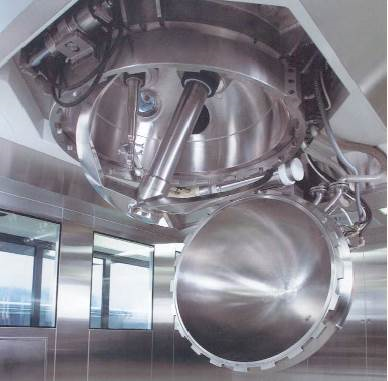7 Types of Indirect Batch Dryers and their Methods of Operation-Part 2
 In last week's "Part 1" blog post we outlined the key factors that distinguish indirect drying from direct drying and discussed the first three types of indirect dryers on our list of seven. Picking up where we left off, let's continue our discussion on the types and uses of the remaining indirect batch dryers that were not previously highlighted. Similar to the descriptions given for the double conical tumble dryer, paddle dryer and disc dryer, we’ll also touch on the unique design elements that differentiate each model from the others.
In last week's "Part 1" blog post we outlined the key factors that distinguish indirect drying from direct drying and discussed the first three types of indirect dryers on our list of seven. Picking up where we left off, let's continue our discussion on the types and uses of the remaining indirect batch dryers that were not previously highlighted. Similar to the descriptions given for the double conical tumble dryer, paddle dryer and disc dryer, we’ll also touch on the unique design elements that differentiate each model from the others.
4. Pan Dryer
The pan dryer is a round, pressure-rated vessel that features either a flat or conical-shaped bottom. Like some of the previous dryer types mentioned, the pan dryer’s agitator can be heated to maximize heat surface area (in addition to the vessel walls, base, and even top head). The agitator can be installed from the top or bottom of the vessel, the top-mounted arrangement usually being preferred as it eliminates dead spots where the product can build up and also allows for translational (up and down) movement to help with the wear and tear. The benefit of the bottom-driven agitator is the amount of torque that can be applied due to the proximity of the agitator blades do the gearbox. The discharge of product from the pan dryer is facilitated by the agitator; when the large nozzle on the side wall is opened, the agitator arm works to push the dried solids through the opening as it rotates. This method of discharge leaves a small amount of “heel” in the vessel since metal-to-metal contact between the agitator blades and dryer base must be avoided. To resolve this issue, three options are available: the heel may simply become part of the next batch, it can be manually removed, or the remaining solids can be physically washed away.
5. Filter/Dryer
Identical in appearance to the pan dryer, the filter/dryer is designed with a filter plate on the bottom that contains a filtrate chamber, allowing for filtration and washing to be performed in addition to drying and discharge. This arrangement is beneficial to processes that involve wet cake as it eliminates the hassle of transferring wet cake into the dryer (wet cake is not pumpable!). Conversely, the filter/dryer’s multipurpose design slightly reduces heat-transfer area with the replacement of the solid base with a filter plate.
6. Conical Screw Dryer
The conical screw dryer gets its name from the tapered shape of the vessel and top-driven screw-type agitator. Positioned close to the heated vessel wall via the inverted “L” shaped arm, the agitator acts as a workhorse to provide superior mixing and movement of the product across the vessel walls. Discharge of solids by means of the bottom central outlet is made easy due to the vessel’s conical walls and vertical orientation. Like the filter/dryer, the versatile conical screw dryer is capable of more than just drying. Powder-blending, crystallization, extraction, and alkalization and other reactions can also be accomplished. While the ranges of operations that can be performed make this dryer a favorite in many industries, the screw-type agitator poses clean-in-place and size degradation issues so it is not a design that is recommended for pharmaceutical applications or processes involving crystals.
7. Spherical Dryer
The spherical dryer is constructed from a round vessel fitted with an agitator that can be mounted from the top (to eliminate dead space/product build-up) or bottom (makes for greater torque). Additionally, the bottom-driven unit features a uniquely designed agitator that imitates the curve of the heated wall surface to expedite mixing and drying of the solids. Almost complete solids discharge can be attained through the outlet at the bottom of the vessel, which utilizes a metal-to-metal-sealed full port ball valve. The geometry of the vessel allows for easy drainage of cleaning fluid through the bottom outlet valve, making this dryer ideal for clean-in-place pharmaceutical applications.
There's a lot more ground to cover with Batch Dryers and drying processes. To find out more, read our free White Paper, “Batch Drying: The Indirect Solution to Sensitive Drying Problems” where you can learn about the guidelines on specifying an indirect dryer and how to optimize drying performance through peripheral equipment.
